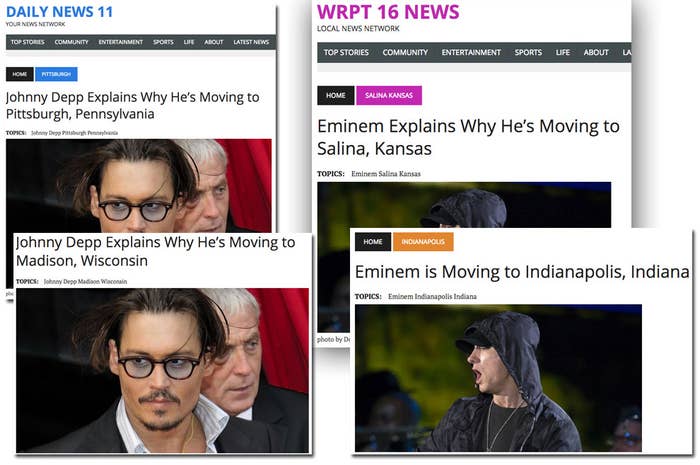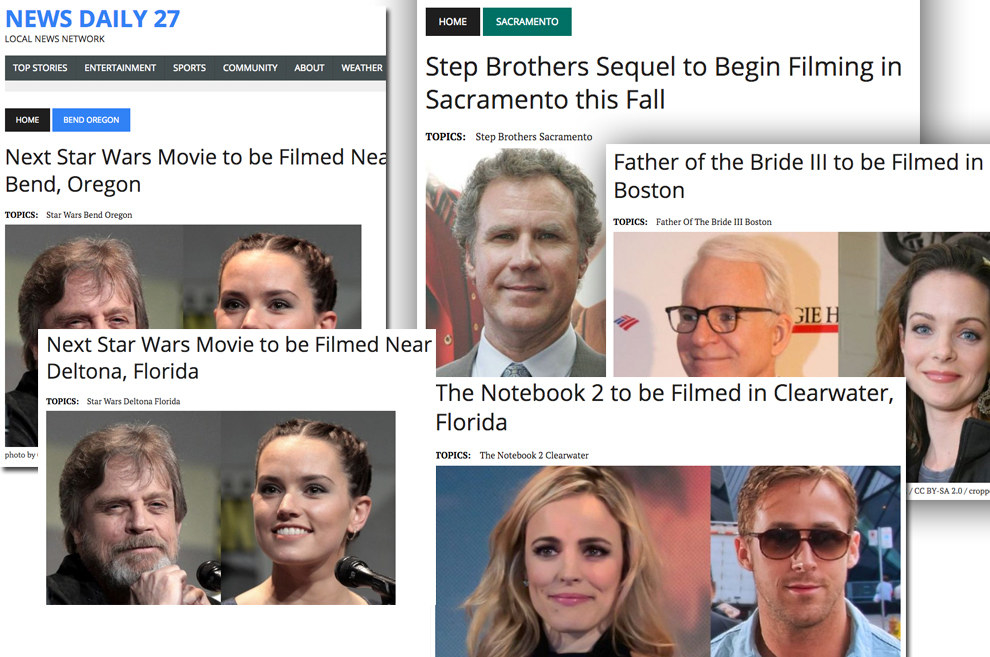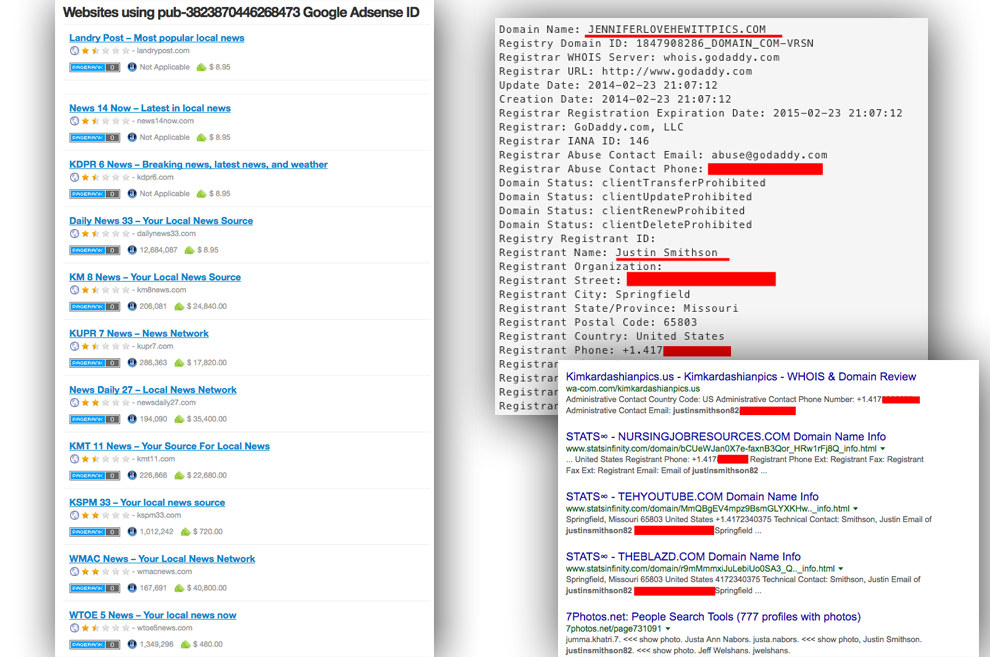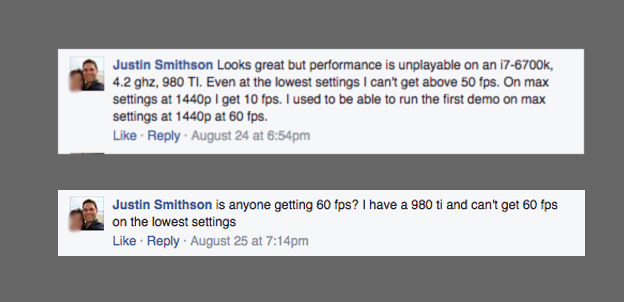In early July, a website made to look like a real news organization published what would prove to be one of the biggest fake news hits of the US election.
WTOE5News.com was barely two weeks old when it published the hoax story, “Pope Francis Shocks World, Endorses Donald Trump for President, Releases Statement.”
It improbably quoted the pope as saying that the FBI’s inability to prosecute Hillary Clinton for her emails led him to endorse Trump. The story also falsely declared that “news outlets around the world” were reporting the endorsement.
To date, the hoax has registered over 100,000 comments, shares, and reactions on Facebook, according to data from BuzzSumo. But the hoax did even better on Facebook when, in late September, the website Ending the Fed published a fake story with the exact same headline. That post has earned close to 1 million Facebook engagements and was the single biggest fake news hit of the election, according to a previous analysis by BuzzFeed News.
Ending the Fed’s copycat hoax has gone on to capture additional attention as concerns about fake news during the election have intensified. That hoax has been pointed to again and again. Yet little has been said — and is known — about the site that originated this massive fake news hit.
WTOE 5 News is no longer online, and its owner has never been identified. It has largely been overlooked as a player in the world of fake news, a flash in the ersatz pan. But a BuzzFeed News investigation has found that the site is part of one of the world’s most unique and ambitious fake news operations — a network of at least 43 websites that together have published more than 750 fake news articles.
Many of the fake stories identified by BuzzFeed News followed the exact same pattern: They falsely reported that a big celebrity was moving to a specific town or community.
None of the sites list an owner or company, and all of their domain registration records are private. Not surprisingly, the person behind one of the biggest fake news scams of all time prefers to remain hidden. To try and identify the owner, BuzzFeed News followed a trail from the fake sites to a group of now-defunct websites about topics including nurses and photos of Jennifer Love Hewitt, and eventually to a house in the small city of Atascadero, California, where a man named Justin Smithson resides.
This is the story of one of the world’s largest and most unique fake news empires, and how it gave birth to what became the iconic hoax of the 2016 election.

Steve Arrison thought his job was about get a lot easier.
Arrison is CEO of the Hot Springs Convention & Visitors Bureau for the town of Hot Springs, Arkansas. Just under 40,000 people live there, but it welcomes an estimated 3 million tourists a year. Arrison’s job is to bring in as many of those visitors as possible. In early March, a news story had the town thinking they’d landed a major VIP and tourist draw.
“Clint Eastwood is Moving to Hot Springs, Arkansas” read the headline. It was being shared like crazy by locals. Even state media was starting to call about it. But as soon as Arrison clicked the link and started reading, he realized something was off.
“I went to the web and saw that same site said Katy Perry was moving to some place in Texas, so immediately a red flag went up,” Arrison told BuzzFeed News. “A lot of people wasted a lot of time on something that was blatantly false. Information moves so quickly it takes a while for the truth to catch up to the falsehoods.”
Beginning in late February, there was a sudden onslaught of news stories on Facebook that all claimed one celebrity after another was moving to an unexpected place. The stories had headlines such as “Johnny Depp Explains Why He’s Moving to Pittsburgh, Pennsylvania,” “Matthew McConaughey Explains Why He’s Moving to Greenville, South Carolina,” and “Demi Lovato Moving to Perris, California.” The list of celebrities in the hoaxes began to expand and soon Eminem, Ryan Gosling, Rihanna, Jim Carrey, Samuel L. Jackson, Justin Bieber, and Brad Pitt were moving. As the days and weeks went on, the locations also began to move farther away on the map: Vin Diesel was moving to Saskatoon, Saskatchewan. Leonardo DiCaprio was moving to Guildford, Surrey, UK.
These stories appeared on sites with legitimate-sounding news domains such as kspm33.com, mckenziepost.com, ky6news.com, and km8news.com. The design of each site was strikingly similar — often just the colors and the name were changed. The text, too, was a simple copy-and-paste effort; just the celebrity’s name and location were changed from one story to the next. It quickly proved to be an effective strategy as the stories began to spread across the internet.
One morning in early March, a staffer for venerable rumor-checking website Snopes logged on to the site’s main email account to read the tips and questions that had flowed in overnight. She saw something unusual: Roughly 25 emails that all asked about reports of different celebrities moving to different towns. The same rumor was being repeated again and again — but with different celebrities and different locations.
Kim LaCapria, a writer for Snopes, told BuzzFeed News they were initially puzzled at how “scattered” the rumors were.
“That spate of rumors was scattered across locations and individuals and basically was diffused to the point where the average social media user would be less apt to ‘see’ the rumor,” she said. “Particularly because they’re seeing it from their vantage point, and likely to think, ‘Well, who’s going to take the time to lie or make up a hoax about my tiny neighborhood?’”
The local focus ensured the hoaxes spread in targeted clusters, and meant someone in, say, Saskatoon had no idea that the same trick was being played on people in Pittsburgh.
Snopes eventually wrote a single post to warn people that no, that big celebrity was almost certainly not moving to their town. One simple clue was that the about page for each site had the exact same disclosure telling people that they were reading a “a fantasy news site.” But the stories kept coming and people kept getting fooled.
LaCapria said in an email that “the rumor was so atypically benign (clearly not a potential lie to advance any agenda or belief) that it again just sort of managed to infest tons of local areas.”
BuzzFeed News identified 342 celebrity-moving hoaxes spread across multiple, connected sites. As the scam scaled and hit more communities, local news websites began publishing debunkings to keep locals from falling for the hoaxes. News outlets in Texas, Maine, Illinois, South Carolina, British Columbia, and many other places tried to stop the stories from spreading.
Meanwhile, the growing network of fake sites began pumping out new variations. Male celebrities suddenly had very complimentary things to say about the women in specific towns. Celebrities began getting flat tires in obscure places, naming somewhat obscure locales as their favorite vacation spots, and buying homes in unexpected communities. One of the strangest variations was a series of at least 11 hoax stories claiming that Justin Bieber was building megachurches in places such as Spokane, Washington.
Another variation moved away from specific celebrities and instead falsely claimed that big film sequels were being shot in different locations: Father of the Bride III, a Harry Potter spinoff, a new Star Wars Film, a new Pretty Woman. They were all suddenly in production and coming to your town. BuzzFeed News identified 152 fake news articles claiming that major film sequels were being filmed in different locations.

The hoaxes combine two important elements that help them spread: location and name recognition. Many people saw a story about their town that also included a celebrity or major film and couldn’t help but share the link on Facebook, thereby driving traffic to sites littered with ads.
An analysis of the sites' content, done using the BuzzSumo content analysis tool, found that while these hoaxes never went hugely viral, they managed to consistently generate tens of thousands of shares, comments, and reactions on Facebook, which likely led to strong traffic and revenue.
BuzzFed News began internally calling this the “local viral scam” because the fake stories went viral on a local basis but never bubbled up higher than that.
LaCapria of Snopes admitted she has grudging respect for the way this approach combined someone or something famous with different locations to spark social shares.
“It’s a very unique thing, the execution was so different,” she said. “It only works if you plug in a relevant celebrity to the area. It was really well targeted.”
It was also proving lucrative enough to keep expanding. BuzzFeed News was only able to identify the existence of one site, McenziePost.com, in February. But at the end of April there were more than 20 nearly identical fake news sites. By June at least 27 were in operation. That was also the month WTOE 5 News was registered. A few weeks later, in a departure from the template of previous fake news articles, that site published the pope endorsing Trump story. It earned over 100,000 shares, comments, and reactions on Facebook, making it the network’s fourth biggest hit on the platform, according to an analysis done using BuzzSumo.
Not long after, on July 19, yet another newly registered site published the exact same story with a twist: This time the pope endorsed Hillary Clinton. (The site that hosted it, KYPO6, it is no longer online but used the same template and language as other sites in the network.)
That story performed even better, generating over 200,000 shares, comments, and reactions on Facebook, according to BuzzSumo. (Both stories were published before the party conventions.)
A few other websites picked up the fake papal story fake story in July, but none saw significant engagement. The Clinton story, in spite of being a bigger hit on Facebook, did not inspire copycats. For the most part, those two hoaxes came and went, and the network of fake sites went back to their core focus of churning out local viral stories.
Then, as the election kicked into high gear in September, Ending the Fed published a hoax story with the exact same headline and scored a massive hit. (Ending the Fed is an anonymously run website that previously attracted attention when Facebook promoted one of its false stories as a trending topic.)
Perhaps inspired by the success of that copycat story, the papal hoax story made yet another appearance on one of the local viral fake sites, Channel16News.com, in mid-October. But it failed to gain much traction on Facebook.
Since then, the network of fake sites has continued to grow, reaching at least 43 sites. The most recently registered domain identified by BuzzFeed News, DailyNews5.com, was bought on Nov. 3. That’s a few days prior to the US election — and before alarm bells about fake news began going off in the media and among political leaders.
But rather than completely shut down the operation and move on in order to avoid attention, the sites continue to push out new hoaxes. A fake story about a new Star Wars film being shot in Roswell, New Mexico, went online just this week, according to data in BuzzSumo. Whoever is running the sites appears to be unconcerned by the outrage over fake news. Or perhaps the sites were too lucrative to shut down? We wanted answers. So BuzzFeed News decided to follow the money.
Though some are now offline, nearly all of the sites in this fake news network contained the same Google AdSense ID in their source code. This means the money earned each month from ads placed on the sites is going into a single account. That ID has also appeared on other websites over the years, from TehYouTube.com and NursingJobResources.com to JenniferLoveHewittPics.com and KimKardashianPics.us. Google does not publicly list the owners of AdSense IDs, but the aforementioned sites were publicly registered by the same person: Justin Smithson, who lived in Missouri at the time, according to historical registration data from Whoisology and DomainTools. The Justin Smithson who resided at that Missouri address now lives in Atascadero, California, according to records obtained in a LexisNexis search. (Go here to view a collection of documents linking Smithson and the network of fake sites to the AdSense ID.)

Smithson is a pilot in his thirties who works for a charter airline in San Luis Obispo. Over the years he has registered and launched many websites. At some point, it appears that Smithson signed up for Google AdSense in order to place ads on his websites. As he launched new sites, Smithson continued to use that same AdSense code, leaving a trail that eventually connected him to the network of fake news sites. (There is of course a chance that Smithson registered those sites on behalf of someone else, who then added AdSense and went on to later launch the network of fake sites. Or that Smithson handed over his AdSense account to someone else.)
In addition to being an experienced webmaster, public Facebook comments from Smithson also indicate he has above-average knowledge of computers and the internet. These two public Facebook comments (which were later deleted) show him talking about the frame rate output of his computer’s graphic card:

Domain registration records also show that Smithson continues to register new domains using the same email address he used for JenniferLoveHewittPics.com and others. At the end of November, for example, he registered FoxBusiness.xyz. In September he bought AlexJones.xyz. As with the fake news sites, those domains now have their ownership information hidden.
In early October, BuzzFeed News contacted Smithson by email to request an interview about his fake news websites. “I'm guessing this is some kind of spam/scam but if not... You've got the wrong person,” he replied.
Smithson did not reply to subsequent emails, including one on Oct. 5 requesting a meeting at noon. On Oct. 6, BuzzFeed News visited his place of work and the Atascadero address listed in the LexisNexis report. Two men were on the front porch of the home when we arrived. When they saw us approaching with a camera in hand, they went inside.
We called out to say we wanted to talk to Justin, and one of the men yelled from a window that there wasn’t anyone there by that name. He threatened to break our camera, so we left. (After publication of this story, Smithson told BuzzFeed News that he does not live at that house anymore. See the update at the bottom of this story for his full statement.)
Smithson did not reply to four subsequent emails, texts, and phone calls. Nor did he reply this week when BuzzFeed News sent him detailed questions and shared the evidence that points to him as the owner of perhaps the world’s biggest fake news operation. (Aside from any state-sponsored efforts, that is.)
As of this writing, at least 20 of these websites are still online. Their stories are still being shared, and they still publish new fake news stories that fool people and earn money for that same AdSense account. LaCapria of Snopes says she still sees new variations of the local viral scam from time to time.
“It still seems to be living on — but most people have gotten past asking us if it’s true that a celebrity is moving to their town," she said.
UPDATE
After publication of this story, Smithson responded by email with this statement:
I do not own those websites. You did not visit my house and I did not threaten to break your camera. I've never seen you at my house. I've never seen you anywhere. Your article (https://www.buzzfeed.com/craigsilverman/the-strangest-fake-news-empire) is entirely defamatory and I'm sending you this one request to immediately remove it.
That Adsense ID is not mine. I used that ID on test websites that I feared could violate Adsense policies. It was essentially a throwaway Adsense ID borrowed from someone else. I do not have access to that ID and have not for some time and am not responsible for what someone else has used it for. Again, I ask you to remove the article immediately.
In response, BuzzFeed News asked him to offer more details on who owns the AdSense ID that he says is not his.
"I have no idea," he said in an email. "I got it from someone who I think was outside of the US years ago. Like I said, it was just a throwaway ID. I don't know if this person even owned it. I certainly don't know their name and didn't know it at the time. I have no idea if that was even their Adsense ID. I was under the impression that other people had used it as well and I'm sure there are other websites you can find that have used that same ID."
During our investigation we used CuteStat and AnalyzeID to help find websites using the AdSense ID. The only active sites we found using this AdSense ID are those publishing the local viral hoax stories.
CORRECTION
The two public Facebook comments from Justin Smithson show him talking about his computer's graphics card. Smithson also previously registered KimKardashianPics.us. This article incorrectly said he was talking about his PC's processing power and internet connection, and that he had registered KimKardashianPics.com. This story was also updated to reflect the fact that Smithson says he no longer lives at the Atascadero address we visited.

